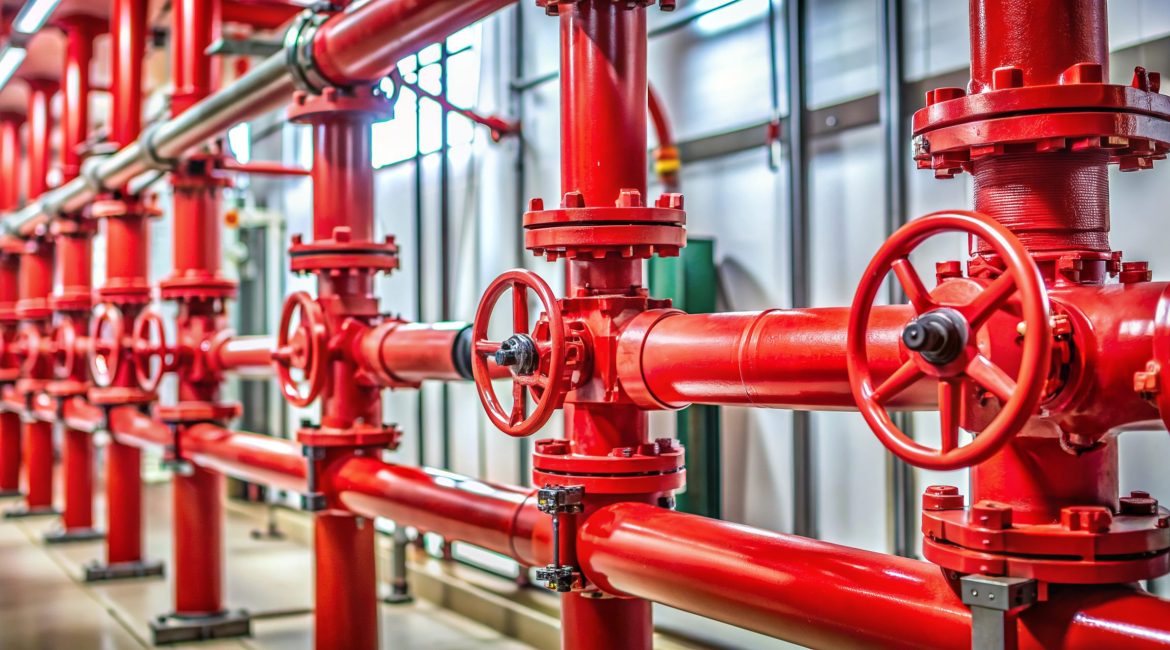Fixed fire suppression systems are designed to control or extinguish fires. They include water-based systems like sprinklers, deluge, water mist, and standpipe systems, gas-based and clean agent systems, and foam and dry chemical systems. To extinguish fires involving flammable liquids, the systems often contain aqueous film forming foams (AFFF), which contain per- and polyfluoroalkyl substances (PFAS). Unfortunately, these compounds persist in the environment, bioaccumulate, and are linked to potential health risks.
Over time, AFFF can degrade, causing clogging, corrosion, or residue buildup in piping, pumps, and nozzles. A thorough cleanout ensures optimal system performance and longevity. When switching to fluorine-free foam (F3) or other alternatives, it is critical to clean out the system to avoid cross-contamination, which could compromise fire suppression effectiveness or cause chemical incompatibility issues. Some AFFF formulations contain hazardous chemicals that could pose risks to firefighters and maintenance personnel during system use and servicing. Proper decontamination helps mitigate exposure risks.
Removing, decontaminating, and properly disposing of AFFF can prevent contamination of water sources and soil. Further, these procedures can help protect the health and safety of firefighters, workers, and the public. Decontaminating and reusing the fixed fire suppression system is often far less expensive than system replacement. Also, decontamination can reduce the liability associated with disposing of PFAS-impacted system components. Transitioning to F3 requires thorough cleaning of the system to remove AFFF and PFAS residues.
Many governmental agencies including the United States Environmental Protection Agency (EPA), state and local regulatory organizations, and the European Union are enforcing restrictions or implementing outright bans of PFAS-containing foams and other products. As of January 1, 2022, with some exceptions, EPA has prohibited the manufacturing or distributing of AFFF in the United States.
Testing and Certification
It is important to work with a licensed and experienced fire protection professional engineering firm when performing testing and certification of fixed fire suppression systems. There are regulatory compliance standards that must be adhered to during system testing and certification. Key agency standards include the National Fire Protection Association (NFPA) Standards, Occupational Safety and Health (OSHA) Regulations, Underwriters Laboratories (UL) or Factory Mutual (FM) Approval, Local Fire Codes, and the Authority Having Jurisdiction (AHJ) Requirements.
Using PerfluorAd for AFFF Removal and Rinsate Treatment
Invented by Martin Cornelsen, the managing director of Cornelsen Umwelttechnologie GmbH, the PerfluorAd™ Process is an efficient method of AFFF decontamination. Significantly, it reduces the volume of PFAS waste requiring specialized disposal, lowering costs.
PerfluorAd is a biodegradable, plant-based oleic acid that ionically binds to and removes PFAS from the wetted surfaces of fire suppression systems including sprinklers, deluge valves, pipes, tanks, cannons, and proportioners. The PerfluorAd™ Process uses concentration, sedimentation, and filtration to remove and separate PFAS compounds from the generated rinsate, allowing discharge to the sanitary sewer after meeting regulatory limits.
Applying the PerfluorAd™ Process can remove far more PFAS than just rinsing with water. TRS Group, the exclusive North American licensee of the technology for mobile and fire suppression systems, routinely achieves PFAS concentration reductions greater than 99%.





